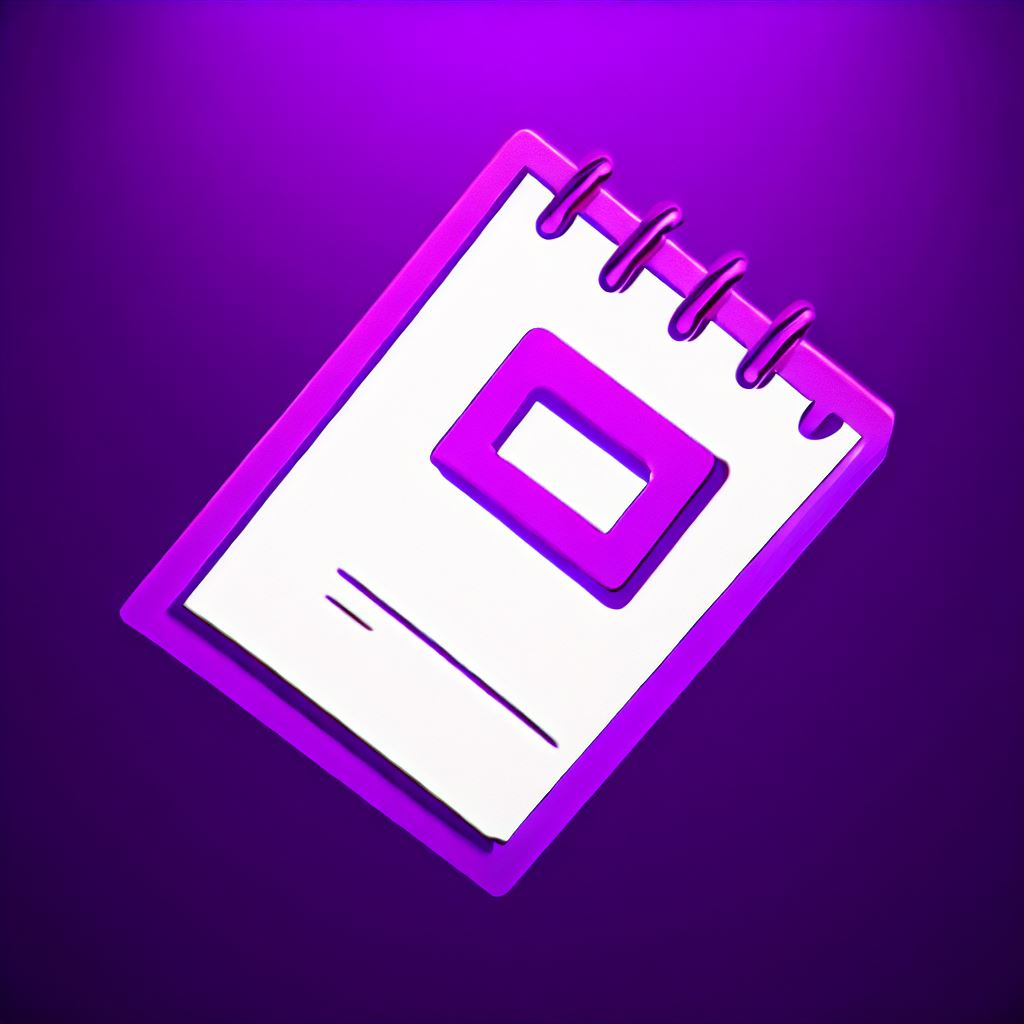
Mastering OneNote: A Comprehensive Tutorial for Beginners
Some interesting stuff to research first:
- How To Outsmart a Romance Scammer
- America To See Unprecedented Surge In Online Shopping Scams On Black Friday And Cyber Monday
- All features for €2.29/mo
Get Surfshark
Chapter 1: Introduction to OneNote
- Why OneNote is a valuable tool for beginners
OneNote is a valuable tool for beginners due to its intuitive and versatile nature, making it an excellent entry point into the world of digital note-taking and organization. First and foremost, its user-friendly interface welcomes newcomers with open arms. The layout mimics a traditional notebook, instantly familiarizing users with its structure and making the transition from physical notebooks seamless.
OneNote's flexibility is another compelling factor. Beginners can create notebooks, sections, and pages, allowing for organization that suits their unique needs. Whether you're a student taking class notes, a professional managing projects, or simply someone who wants to keep a digital journal, OneNote adapts effortlessly to your requirements.
One of the standout features for beginners is its compatibility across devices and platforms. Whether on a Windows PC, Mac, iOS, or Android device, your notes sync seamlessly, ensuring accessibility wherever you are.
Moreover, OneNote simplifies collaboration. Beginners can easily share notebooks with classmates, colleagues, or friends, promoting group work and idea sharing.
Overall, OneNote's approachability, adaptability, cross-device functionality, and collaboration features make it an indispensable tool for beginners. It not only streamlines note-taking but also empowers users to be more organized and productive from the very start of their digital journey.
- Overview of the OneNote interface
The interface of OneNote offers an accessible and visually pleasing environment, making it an excellent choice for beginners. At first glance, it presents a clean and familiar appearance, resembling a physical notebook, which eases the transition into digital note-taking.
The interface is divided into several key components:
Notebook Pane: This left-hand sidebar displays all your notebooks. It's where you can create, access, and switch between different notebooks, each represented by a distinct icon and name.
Section Tabs: Located just above the notebook pane, section tabs allow you to organize your content into different categories or subjects. You can easily add, rename, or rearrange sections to suit your needs.
Page Area: The main workspace occupies the center of the screen. This is where you create and edit your notes. You can type text, insert images, draw, and more within individual pages.
Ribbon Menu: The ribbon menu sits at the top of the window, offering various tabs like "Home," "Insert," "Draw," and "View." Each tab contains a range of tools and options for formatting, adding content, and customizing your notes.
Quick Access Toolbar: Located above the ribbon, this toolbar provides quick shortcuts to essential functions like saving and undoing actions.
Search Bar: OneNote's powerful search bar, usually found at the top-right corner, helps you quickly locate specific notes or content within your notebooks.
View Options: OneNote offers different view options, including Normal View, Reading View, and Full Page View, allowing users to choose the most comfortable way to work.
Overall, the OneNote interface is designed with simplicity and user-friendliness in mind. Its resemblance to a physical notebook combined with a rich set of digital features makes it an ideal choice for beginners seeking an organized and intuitive platform for note-taking and information management.
Chapter 2: Getting Started
- Downloading and installing OneNote
Downloading and installing OneNote is a straightforward process, making it accessible for beginners. Here's an overview of the steps:
1. Verify Compatibility:
- Ensure that your computer or device meets the system requirements for OneNote. It's available for Windows, Mac, iOS, and Android.
2. Windows PCs:
- For Windows users, OneNote is typically included with Microsoft Office, but it's also available as a standalone app from the Microsoft Store.
- If you have Microsoft Office installed, you likely already have OneNote.
3. Mac:
- Mac users can download OneNote for free from the Mac App Store.
- If you already have a Microsoft 365 subscription, you can install it via your Microsoft account.
4. iOS (iPhone and iPad):
- Visit the App Store on your iOS device.
- Search for "OneNote" and click "Get" to download and install it.
- Sign in with your Microsoft account or create one if you don't have one.
5. Android:
- Open the Google Play Store on your Android device.
- Search for "OneNote" and tap "Install" to download and install the app.
- Sign in with your Microsoft account or create one if needed.
6. Sign In:
- After installation, launch OneNote and sign in with your Microsoft account. If you don't have one, you can create it during the setup process.
7. Set Up Your First Notebook:
- OneNote may prompt you to create your first notebook. If not, you can create one manually within the app.
- You can choose where to store your notebook, either locally or in the cloud, depending on your preferences.
8. Start Taking Notes:
- With OneNote installed and your account set up, you're ready to start taking digital notes and exploring the app's features.
The process may vary slightly depending on your device and operating system, but these steps provide a general overview of downloading and installing OneNote. It's designed to be user-friendly and accessible, making it an excellent choice for beginners looking to digitize their note-taking and organization.
- Setting up your first notebook
Setting up your first notebook in OneNote is a crucial step to get started with digital note-taking and organization. Here's a step-by-step guide on how to set up your first notebook:
1. Open OneNote:
- Launch the OneNote app on your device after downloading and installing it.
2. Sign In or Create a Microsoft Account:
- If you haven't already, sign in with your Microsoft account. If you don't have one, you can create a new account during this step.
3. Access the Notebook Pane:
- On the left-hand side of the OneNote window, you'll find the "Notebook Pane." This is where you'll manage your notebooks.
4. Create a New Notebook:
- Click or tap on the "+ Notebook" button, often represented by a "New" or "Add" icon.
5. Name Your Notebook:
- A dialog box will appear, prompting you to name your new notebook. Give it a descriptive name that reflects its content or purpose. For example, "Personal Journal" or "Work Projects."
6. Choose a Location:
- You'll have the option to choose where to store your notebook. OneNote offers two primary storage locations:
- OneDrive: This cloud storage option allows you to access your notebook from anywhere and synchronize changes across devices. It's a good choice for those who want to access their notes on multiple devices.
- This Device: This option stores your notebook locally on the device you're using. It's suitable for users who prefer to keep their notes on a specific computer.
7. Create Your Notebook:
- Click "Create" or "Next" (depending on your device) to create the notebook.
8. Explore Your Notebook:
- Your new notebook will appear in the Notebook Pane. You can now click on it to open it and start adding sections and pages.
9. Add Sections and Pages:
- Inside your notebook, you can create sections to categorize your notes and pages to jot down your content. Right-click (or tap and hold) on the notebook or section tabs to add new sections or pages.
10. Start Taking Notes:
- With your notebook set up, you're ready to start taking digital notes, inserting images, and utilizing OneNote's features to organize your information effectively.
Setting up your first notebook in OneNote is a straightforward process, and it lays the foundation for organized digital note-taking. Whether it's for personal use, work, or school, OneNote provides a versatile platform for managing your digital notes and information.
- Basic configuration and preferences
Configuring basic settings and preferences in OneNote is essential to tailor the application to your specific needs and preferences. Here's a guide on how to perform basic configuration and set your preferences in OneNote:
1. Launch OneNote:
- Open the OneNote application on your device.
2. Sign In:
- If you're not already signed in, sign in with your Microsoft account.
3. Access the Options/Settings:
- The method for accessing options or settings may vary depending on your device and operating system. Here's how to find it on some common platforms:
- Windows PC: Click on "File" in the top-left corner, then select "Options" or "Settings."
- Mac: Click on "OneNote" in the top menu, then select "Preferences."
- iOS (iPhone/iPad): Tap the gear icon (Settings) within the app.
- Android: Tap the three horizontal lines (Menu) in the upper-left corner, then select "Settings."
4. Configure General Settings:
- In the Options or Preferences menu, you'll find various categories of settings. Start with the general settings, which may include options to set your default font, page size, and language.
5. Choose Default Notebook and Section:
- Many versions of OneNote allow you to set a default notebook and section for new notes. This can save time and help keep your notes organized.
6. Set Sync Preferences:
- If you're using OneDrive or another cloud service to sync your notes across devices, configure your sync settings. Ensure that your notebooks are syncing correctly.
7. Customize Note Formatting:
- Adjust formatting preferences such as font style, size, and color. You can also set default paragraph formatting options.
8. Configure Notifications:
- Depending on your device, you can choose to receive notifications for updates and changes to your shared notebooks.
9. Explore Additional Preferences:
- Explore other preference categories such as privacy, backup, and accessibility settings. Customize these to enhance your OneNote experience further.
10. Save Changes:
- After configuring your preferences, make sure to save your changes within the Options or Preferences menu.
Remember that your configuration options may vary depending on the version of OneNote and the device you're using. Take your time to explore these settings and adjust them to suit your specific note-taking and organization needs. Customizing these preferences can greatly enhance your overall OneNote experience, making it a more efficient and personalized tool for your digital note-taking tasks.
Chapter 3: Creating and Organizing Notebooks
Creating and organizing notebooks in OneNote is a fundamental step in effective digital note-taking and information management. Here's a step-by-step guide on how to create and organize notebooks in OneNote:
1. Open OneNote:
- Launch the OneNote application on your device.
2. Sign In:
- If you're not already signed in, sign in with your Microsoft account.
3. Access the Notebook Pane:
- On the left-hand side of the OneNote window, you'll find the "Notebook Pane." This is where you'll manage your notebooks.
4. Create a New Notebook:
- Click or tap on the "+ Notebook" button, often represented by a "New" or "Add" icon.
5. Name Your Notebook:
- A dialog box will appear, prompting you to name your new notebook. Give it a descriptive name that reflects its content or purpose. For example, "Personal Journal" or "Work Projects."
6. Choose a Location:
- You'll have the option to choose where to store your notebook. OneNote offers two primary storage locations:
- OneDrive: This cloud storage option allows you to access your notebook from anywhere and synchronize changes across devices. It's a good choice for those who want to access their notes on multiple devices.
- This Device: This option stores your notebook locally on the device you're using. It's suitable for users who prefer to keep their notes on a specific computer.
7. Create Your Notebook:
- Click "Create" or "Next" (depending on your device) to create the notebook.
8. Explore Your Notebook:
- Your new notebook will appear in the Notebook Pane. You can now click on it to open it and start adding sections and pages.
9. Adding Sections:
- Sections help you categorize your notes. Right-click (or tap and hold) on the notebook tab, then select "New Section." Name your section, and it will appear as a tab within the notebook.
10. Adding Pages:
- Inside each section, you can add pages for specific topics or notes. Right-click (or tap and hold) on the section tab and select "New Page."
11. Reorganize Your Notebooks:
- To reorder notebooks, sections, or pages, simply drag and drop them within the Notebook Pane to rearrange them as needed.
12. Customize Notebook Covers:
- You can personalize the cover of each notebook by right-clicking (or tapping and holding) on the notebook tab and selecting "Customize Notebook." This allows you to choose a cover image and color.
13. Share and Collaborate (Optional):
- If you're working on a shared project or want to collaborate with others, you can invite them to access specific notebooks.
Creating and organizing notebooks in OneNote is a flexible and user-friendly process. It allows you to structure your digital notes in a way that suits your needs, whether you're a student, professional, or using OneNote for personal purposes. This organization is essential for efficient note-taking and information retrieval.
Please help us grow and share this article with your friends 🙏 😊





Posted Comments
? You've nailed it! This article is precisely what I've been seeking. It's a perfect match!
Your article is an ideal fit for my needs ?. It's like you knew what I was looking for.